


Edward Partleton (1806-1842)
and
Edward Partington 1920-1958)
This page is a continuation of the page for Edward Partleton (1782-1845). Click here to return to Part I of the story.
To summarise the events of Part I... Edward Partleton, whose surname is sometimes recorded as Partington, was born in the coal mining area around Whitehaven in 1782. He raised his family in the nearby village of Hensingham before moving into the town of Whitehaven where he was employed in the mines of the local landowner Lord Lonsdale. In 1828 he survived an explosion in the mine but was terribly burned.
And now it's time to introduce another Edward Partleton / Partington, who had been born in England in 1806 but whom we find, aged 35, residing on the Isle of Man in the 1841 census:

If you're from Britain, you probably know where the Isle of Man is, but if you're not, you probably don't... it's a few miles off the coast of Britain, half way to Ireland, and we can see it in the sea near to Whitehaven in the map below:


The Isle of Man is technically not part of the United Kingdom. It is self-governed and is known by the term Crown Dependency. It's not even part of the European Union, and requires special trade agreements. However, the island is owned by the Crown, and it is treated as a part of the UK for British nationality law purposes. All a bit complicated, and tied up with the fact that the island offers convenient and profitable international financial services. Oh, and the Bee Gees were born there.
Hold on - I hear you say - this web page is about Edward Partleton who was born in 1782 and lived in Whitehaven. Why are we suddenly rambling on about the Isle of Man and a different Edward Partleton, one who was born in 1806 and who lived on this strange island?
We'll, gentle readers, it's because we have to make some sense of this clipping:

Who is this Edward Partleton who was born in 1806 and died in 1842? Why is he on the Isle of Man? And where on Earth did that clipping come from?
Well, let's start with the clipping. It came from a random Google trawl trough he internet. It's a paper written by Andrew Scarffe in 1987, called The Building of the Laxey Wheel.
Let's have a look at the Laxey Wheel:
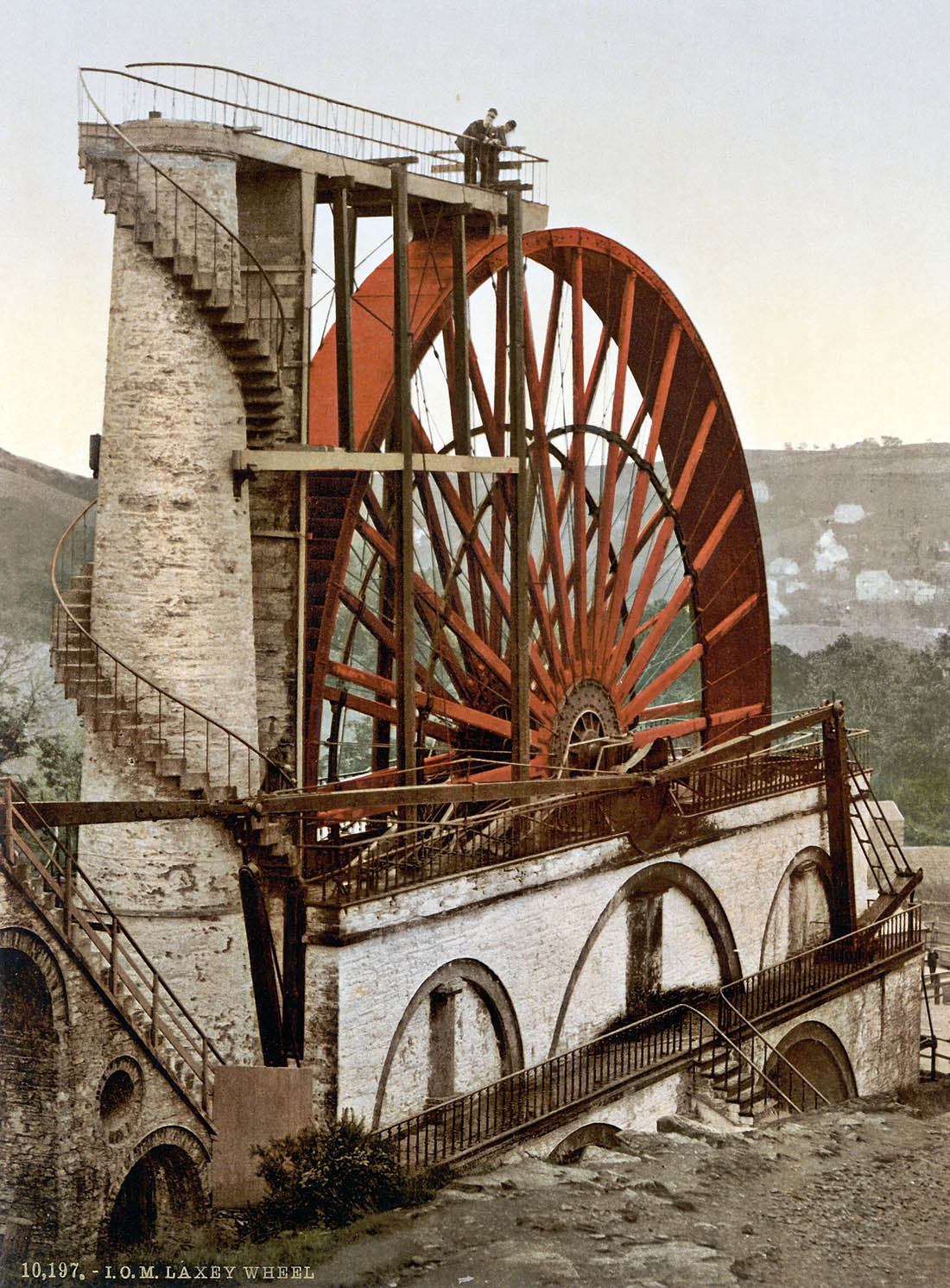
Whoa, before we get too excited, this 72-foot diameter giant - the biggest water-wheel in the world no less - was not built by Edward Partleton, but by his successor Robert Casement. Edward worked on the previous model which was 46 feet in diameter. There's no coal on the Isle of Man to drive engines, so the Laxey Wheel was created as a beautiful and eco-friendly alternative; it's a humungous water-wheel fed via a pipe from a reservoir high in the hills. The wheel was used to turn long shafts which made their way deep underground. These shafts in turn drove pumps which removed 250 gallons-per-minute of water from the lead mine below.
The Laxey wheel ceased to function when the lead mine closed in 1929, was restored in 1970, and still turns gracefully in the summer as a tourist attraction, even though it's not actually doing anything. I found this short home-made travelogue of the Isle of Man on YouTube which shows us the Laxey Wheel in motion. The amateur narrator has made quite a few factual errors. The Laxey mine yielded lots of different metals but it was primarily lead not zinc, the Isle of Man is quite definitely NOT a part of the UK, and Laxey is not pronounced Laxley!:
When mining ceased in 1929, the tunnels and shafts were closed off for safety, but we can venture underground - as our Edward must have done quite often - and have a look inside the Laxey lead mine when it was re-excavated in the 1990s:

The picture above is near the location of the main pump shaft. Edward Partleton, as Engineer to the Laxey Mining Company, would have to know all about the pumps - though working by the light of oil lamps, he would never have seen the mine this bright!
He'd probably also have struggled to see the beauty of some of the ore deposits in their full glory; in the case below the colours are caused by zinc and copper:
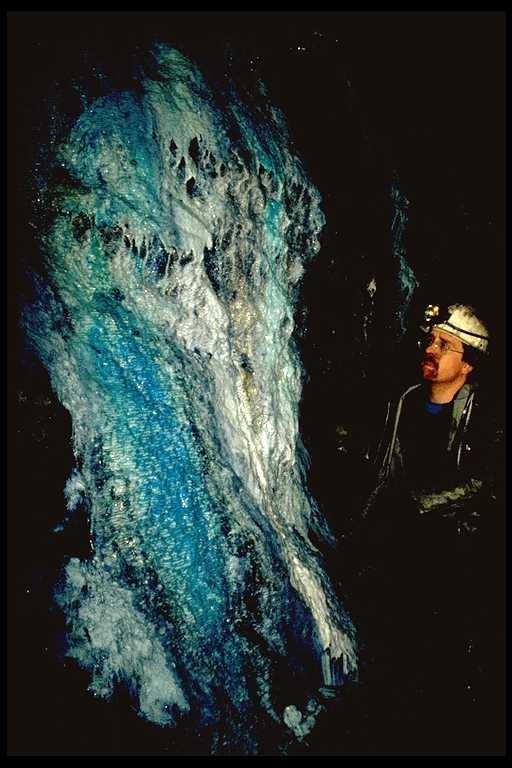
So, we need to know exactly where Laxey is...

Edward was living in a stunningly pretty place. Below we see Laxey Bay in 1857:

This view of Laxey was engraved in 1834, one year after Edward got married on the island:

And here's a Victorian view of the pretty Laxey Glen looking out to the ships out at sea:
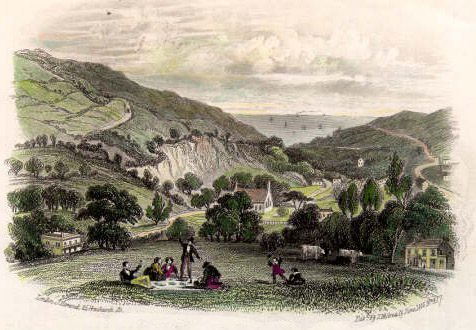
So now we know what young Edward Partleton was doing on the Isle of Man. He was engineering and maintaining large pieces of machinery. And now that we know he's there, we can search the local Parish Registers for his marriage;

and find it, even if they spell his name rather strangely:

As we observe in the above marriage record, Edward's local church in 1833 was about a mile and a half inland from where he lived, at Lonan, a good twenty-minute walk from Laxey. The couple were either married at Lonan Old Church which we see below;


or they were married at the new church - All Saints:
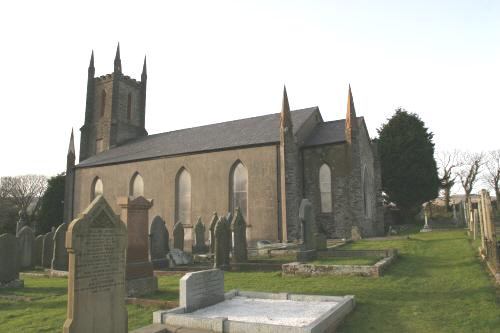
The new church was completed either in 1833 - the year Edward was married - or 1834 depending on your source. Take your pick which church held the wedding. One year earlier, or one year later, and we'd know for certain. I'd prefer the old one, but then I'm a historian.
Let's go back and have another look at that 1841 census where we find Edward living next door to Robert Casement:

Finding photos of these 19th century Partletons is nearly impossible, but we are occasionally able to furnish the face of someone whom they knew. Below we see, in his old age, Engineer Robert Casement, working colleague, associate, and next-door-neighbour to Edward Partleton (1806-1842):
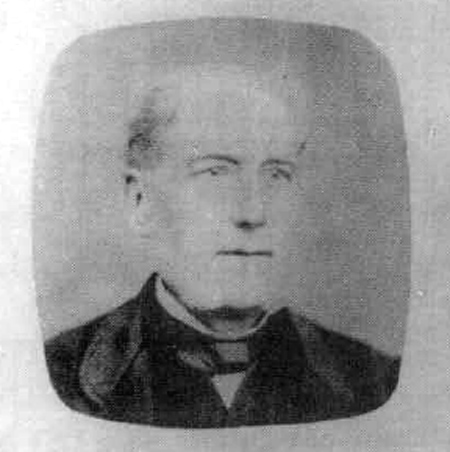
In fact Robert Casement is so legendary on the Isle of Man, they even celebrated him with his own postage stamp in 1983! They've used the same portrait but taken a slight liberty with his apparent age:

Let's have another look at that census of 1841 with Partleton and Casement living next door to each other:

Under 'Where Born' we see that Edward Partleton's wife Margaret [nee Brown] was born on the Isle of Man, as were all the children, but Edward himself has a capital 'E' in this column which signifies that he was born in England.
Well, I can tell you that I've searched the LDS records & there's no baptism of an Edward Partleton or Partington in or around 1806. This is not very surprising because the LDS records are far from complete, but let's have another look at the family of Edward Partleton Sr:

Edward Partleton Sr's (b1782) wife Elizabeth Davis was regularly popping out babies through her life, every couple of years, as was the way of things then. But look that that huge gap - 1803 to 1809. Did she really have no children for six years? Edward Partleton Jr was born in 1806...
I also observe that Edward Sr (b1782), though he has five known sons, apparently didn't name any of them Edward.
The point I'm trying to make here is that Edward Partleton on the Isle of Man, born in 1806 in England, and died on a boat to Whitehaven in 1842, is very likely the son of our Edward (b1782), and I have satisfied myself that he probably is. There's no proof here; you can make up your own mind - but he must be a close relative - there just aren't that many Partletons around. Let's get back to the clipping:

That's very tantalising. Engineer Edward died "on a boat crossing" in August 1842. He's only 36. This hardly points to natural causes. Did the boat founder? Did he drown? Did have a heart attack? Was he savaged to death by a giant seagull? Unfortunately, this is the only mention of Edward in the whole paper. I've emailed the author - to no avail - though I will keep trying.
We can turn to the noted local marine artist Robert Salmon to furnish us with some images of a boat trip to Whitehaven. Get your sea-legs ready... step into Edward Jr's shoes, hear the rigging creak and groan, feel the ship rocking, the spray in your face, and admire the harbour as we approach it on our journey from the Isle of Man to Whitehaven:
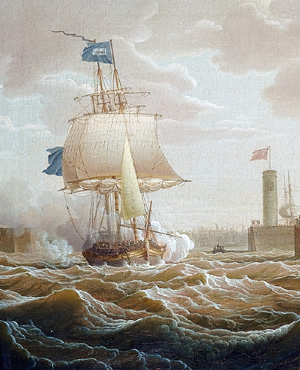 Left: A boat approaches Whitehaven Harbour
Left: A boat approaches Whitehaven Harbour
Salmon loved to paint choppy seas, which as we can see above, he executes exquisitely. Below he has painted a ship run-aground in Whitehaven Harbour on a fierce night, sailors foundering in the lifeboats:

And here's an engraving of 1854 of Whitehaven Harbour - an extremely familiar sight to both Edward Sr and Edward Jr...
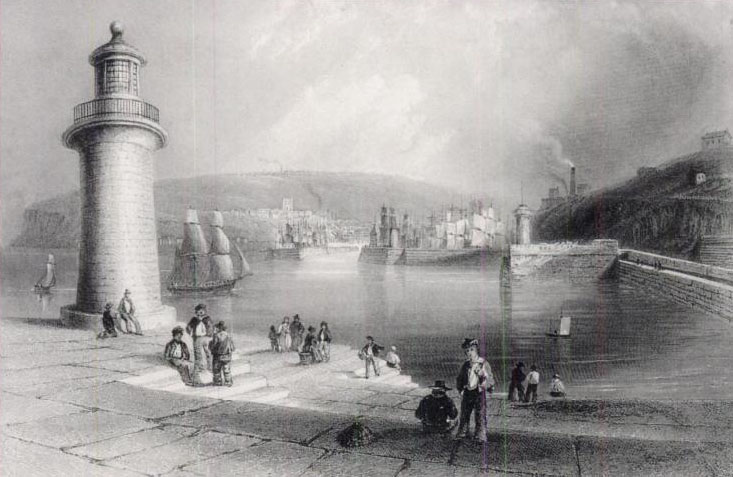
But we really would like to find young Edward's death on the boat in August 1842. We could get his death certificate and find out the cause. Unfortunately the official records don't help a lot. Let's search for this death at ancestry.co.uk...

What we see above are the death records for every Edward Partleton or Partington who died between 1841 and 1851. The one which catches our eye, highlighted in green, died in 1845, not 1842, and is almost certainly our Edward Sr, born 1782, the subject of this page who survived the explosion, finally dying at age 63.
Young Edward's death in 1842 is not there... but look closely at the search results and we see that these are for England and Wales only. Edward Jr would undoubtedly have been taken straight home to the Isle of Man for burial, and his death would be recorded on the Isle of Man where he was resident. We need to check the records for the Isle of Man.
Unfortunately this is where the Isle of Man proves its independence, because compulsory death registration, which began in the UK in 1837, did not commence on the Isle of Man till 1878. Records were kept but were not compulsory between 1849 and 1878, and possibly do not exist at all before 1849... so there's less than 100% chance of finding our Edward.
Records are kept at the Isle of Man Civil Registry:
Civil Registry (Isle of Man)
Registries Building
Deemsters Walk
Bucks Road, Douglas
Isle of Man, IM1 3AR
Telephone number: +44 (0) 16 2468 7039
It seems we may have to contact them if we want to locate Edward's death certificate. Meantime, his cause of death on that boat journey remains a mystery.
A few years pass, and the widows of both Edwards are evident in the 1851 census. Here's Edward Jr's wife Margaret on the Isle of Man, raising her young kids on her own, working as a housekeeper:

Just two doors away is Robert Casement, who took over Edward Partleton's position as Engineer to the Laxey Mining Company upon Edward's untimely death. Robert will soon be working up his grand design for the giant Laxey water wheel which was built in 1854:

You may at this point be wondering where all these scans of original census records come from: I can tell you that they are from the huge database of Ancestry.co.uk who provided the above census and other original records in this web site. If you're inspired by this website to seek out your own British ancestors as I have done, click here.
On the same day - Sunday 30 March 1851 - over in England, Edward Sr's widow Elizabeth, now 76, is still living at Kells Bearmouth near Whitehaven...
She is keeping a cow or two and presumably selling the milk to scratch a living. Life was tough in those days.

Elizabeth died in Whitehaven in 1857 aged 80+.
Back on the Isle of Man - I think we should follow the fortunes of Edward Jr's widow Margaret. She had three children in that 1851 census. Her son John was 16, employed as a lead-ore washer, and he died just two years later aged just 18. I can't help thinking from that job description that it might fail modern health and safety standards? How does poor Margaret cope with the loss of her young son? Life was indeed tough in those days.
Margaret's son Thomas Partington married Sophia Clague in 1866. You'll see the Clague family as neighbours in the 1851 census above. Thomas and Sophia had 14 children which is a record for these web pages. Margaret's daughter Margaret married Joseph Quayle in 1867 and had three children. The Quayles are also evident on the same 1841 census sheet as Edward. If the name Quayle sounds familiar, well, yes, Margaret was definitely marrying a relative of the 44th Vice-President of the United States, Dan Quayle, whose great-grandfather Robert Quayle was born just 6 miles away in Douglas, Isle of Man on 01 December 1853.
Margaret Sr. died in the 1880s - and so did her son Thomas who passed away in 1888 aged 49, leaving poor Sophia with dozens of little mouths to feed. If we look at the 1901 census we see Sophia and some of her kids, and first grandchild, Edna.

Aside from the three I have greyed-out, who came from Liverpool and have no children, all Partingtons on the Isle of Man in 1901 are descended from our Edward Partleton Jr. through his son Thomas. If you're a Partington and you live on the Isle of Man today, I'd say it's a fair bet you are descended from Edward.
With that in mind, we come to one of those strange twists of fate which seem to occur so regularly when digging into family history:
Three weeks after the air crash which killed most of the Manchester United team in 1958, another disaster occurred. It was the crash of a flight from the Isle of Man to Manchester in England in severe winter conditions, the plane coming down near to Bolton in Lancashire:

What we see above is a newspaper report from the Isle of Man Examiner of the death of Edward Partington on 27 February 1958. 116 years after his great-granddad Edward Partleton died on a journey from the Isle of Man to England on a boat, Edward Partington died making the same journey in an aeroplane.
The plane, a Silver City Bristol 170 Freighter - suffering poor visibility and making a number of navigation errors - flew straight into deep snow on the hillside at a bleak moor called Winter Hill, just a few hundred yards from the main ITV television transmitter for the area. Weather conditions were so bad that engineers working at the transmitter were unaware that the crash had occurred.
Edward, known as Ted, was employed by the Isle of Man Water Board; it's not clear why he was on the plane - which was chartered by men working in the Isle of Man motor trade to go to see a car show in Manchester - but his story is retold below:
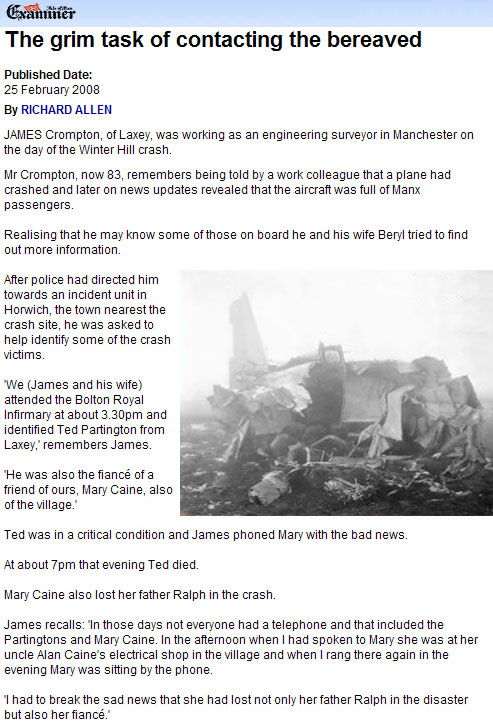
Edward Partington of Laxey? Sounds familiar? I say that because we obviously want to prove the link between our Edward Partleton/Partington of Laxey in 1842, engineer to the giant 46' water wheel, and this Edward Partington of Laxey in 1958, employee of the Isle of Man Water Board. Obviously one is descended from the other, but we must prove it... and here again we are stymied by Isle of Man record-keeping.
Here's Edward's death, recorded by the UK General Records Office some weeks after the crash:

This gives us a new fragment of information; the fact that Ted was born in 1920 give or take a year. Again we'll have to contact the Isle of man Records Office if we want to get his birth certificate and identify his parents.
The power of the internet gives us easy information. There are two Partingtons currently listed in the Isle of Man Phone Book at Laxey, no doubt descendants of Edward. I wonder if they know that their family was once known as Partleton?
And as a post-script to all this discussion, it is eminently possible that the name Partleton is a variant of the much commoner surname Partington and that the name-switching phenomenon we've seen in this web page is merely people reverting to the original form of their surname; Partington. The first mention of the name Partleton in Cumbria is of the year 1728, nothing before that.
The surname Partington originates from the village named Partington in Lancashire - about 15 miles from where Ted's plane crashed...
If you enjoyed reading this page, you are invited to 'Like' us on Facebook. Or click on the Twitter button and follow us, and we'll let you know whenever a new page is added to the Partleton Tree:
Do YOU know any more to add to this web page?... why not send us an email to partleton@yahoo.co.uk
Click here to return to the Partleton Tree 'In Their Shoes' Page for Cumberland